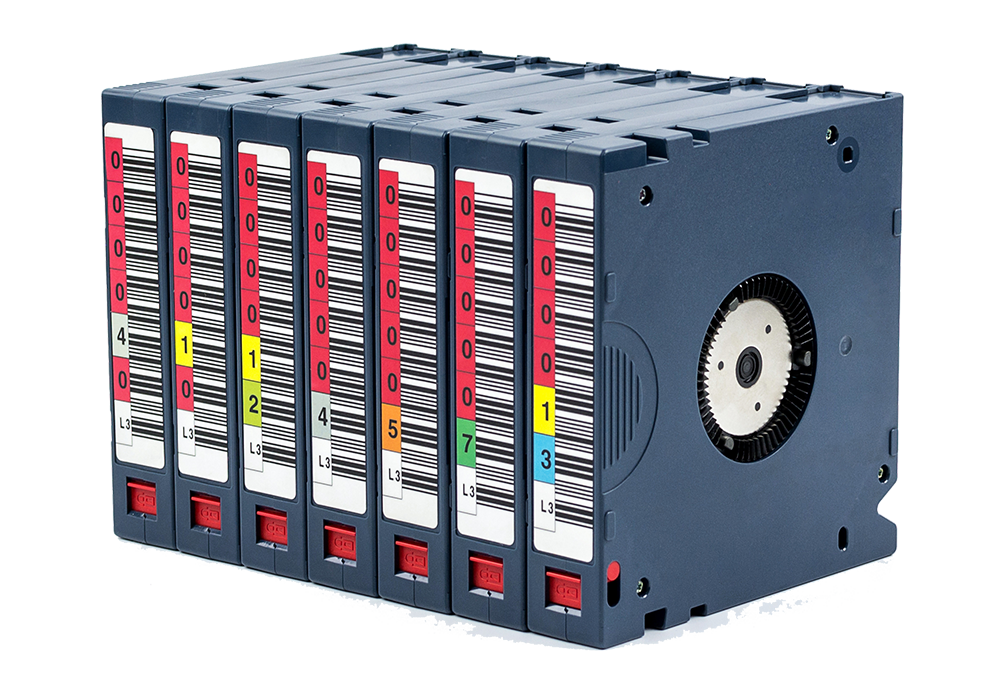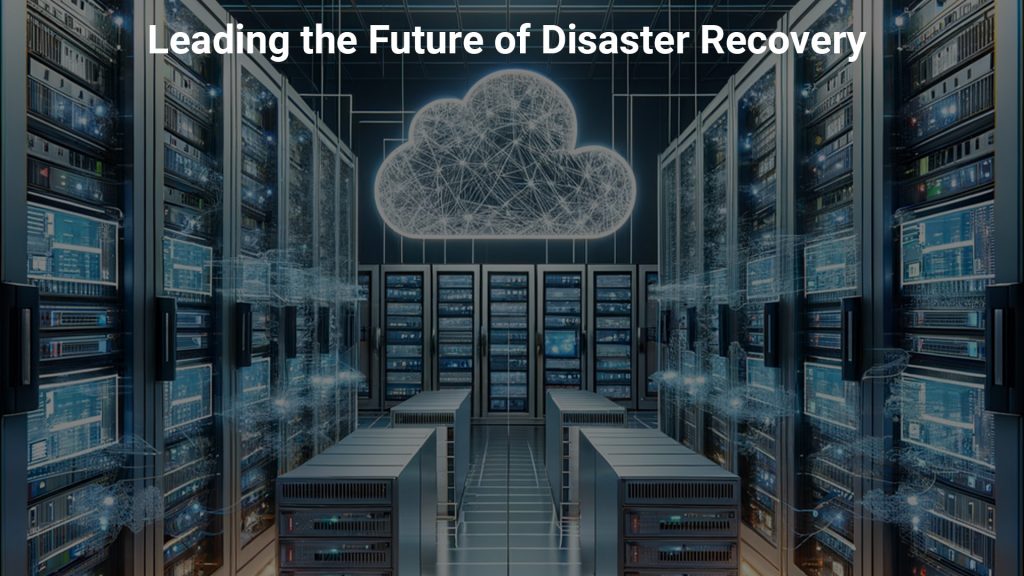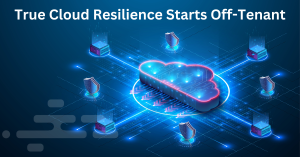Disaster recovery has come a long way. The rise of cloud solutions around 2006 was a major turning point, offering faster, more reliable ways to protect and recover data. 2010-2020 saw explosive growth in the cloud computing market. The global cloud computing market grew from $24.63 billion in 2010 to $156.4 billion in 2020, representing a 635% increase.
But even with those advances, we’re still facing a whole new set of challenges. From increasingly sophisticated cyberattacks to unpredictable natural disasters, the threats to our data are constantly evolving. It’s clear we need smarter, more adaptable solutions to keep up.
This article explores the potential of AI in cloud-based disaster recovery, the evolving role of the cloud, and the challenges we still need to overcome. It also shows why disaster recovery-as-a-service (DRaaS) is leading the way and how it can help your business stay resilient in uncertain times.
The Evolution of Disaster Recovery

Remember the days of clunky tape backups, painstaking manual processes, and endless hours spent trying to get systems back online? It wasn’t pretty, and it certainly wasn’t efficient. Since then, technology has evolved, and so has our approach to disaster recovery.
The move to the cloud marked a significant leap forward, offering faster, more reliable ways to protect and recover data.
The future of disaster recovery lies in constantly pushing boundaries and finding new ways to stay ahead of the curve. With this in mind, let’s look at some predictions for the future of disaster recovery.
ered at a low price. Low starting prices reduce barriers to entry, attracting more customers. Later, the price sharply increases month over month, aiming to capitalize on the established customer base.
In the context of cloud solutions and Disaster Recovery-as-a-Service (DRaaS), this happens when DRaaS providers bill based on predicted data storage (with deduplication factored in), which leaves room for vendors to adjust the numbers in their favor, unexpectedly increasing your costs.
Your bill will steadily increase month over month due to factors your cloud provider claims are “unpredictable” within your environment. This destabilizes your budget and can price you out of the service. This, especially when it comes to traditional disaster recovery, often entails hidden costs buried in complex contracts:
When it comes to cloud solutions, especially cloud storage, one of the main culprits behind this hockey stick pricing is deduplication. DR providers often focus on the failover (getting you to the DR site) but lack clear failback strategies to help you transition back to normal operations once the crisis is resolved.
The Rise of AI in Cloud-Based Disaster Recovery
Technology and technological advancements are changing how we approach disaster recovery, and you should be prepared for it. Cloud computing and AI are entering the scene, with AI playing a particularly exciting role.
AI is your new helper in times of crisis. It handles tedious, manual tasks that used to take up valuable time and resources. This includes backing up data, redirecting network traffic, and switching to backup systems when the main ones fail. AI doesn’t stop there – it learns and adapts, ensuring your recovery plans are current and ready for unexpected events. It’s also responsible and prioritizes security and privacy with features like role-based access controls and transparent data usage policies.
Here’s what this means for you:
- Automation on steroids: Say goodbye to tedious manual tasks. AI can handle the heavy lifting, making recovery smoother and faster, getting you back on your feet in no time.
- Supercharged threat detection: Forget relying on old-school methods that are slow and prone to errors. AI can analyze massive amounts of data in real time, spotting potential threats before they wreak havoc.
- AI-powered conversational search: This lets you interact with your data using natural language, simplifying complex queries and uncovering hidden insights.
- Always learning and improving: AI systems don’t just sit there; they’re constantly learning and adapting. This means your disaster recovery plans can evolve alongside the ever-changing threat landscape and new tech developments.
- Generative AI: This cutting-edge technology is poised to usher in a new era of super-fast recovery times and more effective responses to IT disruptions.
It’s an exciting time to be in disaster recovery, and AI is leading the charge. Platforms like Cohesity Turing are at the forefront of this AI revolution, offering tools that help organizations unlock insights from their data and make faster, more informed decisions in the event of a disaster.
Potential Challenges and Concerns of AI in Cloud-Based Disaster Recovery
For one thing, AI is only as good as the data it learns from. If that data is flawed, the AI might make inaccurate predictions or miss potential risks, throwing a wrench in your recovery plans.
AI can sometimes make decisions that are difficult to understand or explain, leading to a lack of trust and making it hard to know if it’s making the right calls. Security is a big concern too. AI-powered recovery involves handling tons of sensitive information, making it a tempting target for bad actors. Keeping that data safe is crucial.
There’s also the fact that AI needs serious computing power, which can be a barrier to entry for smaller organizations with limited resources. Plus, making sure the AI’s insights are presented in a way that’s actually useful for the people who need them. This means getting input from different stakeholders, which can become complicated.
We must also think about the ethical side of things. Bias in AI algorithms, the need for proper training, and ensuring transparency in AI’s decisions are all important factors that need to be addressed. Integrating AI into existing systems can also be tricky, especially if those systems weren’t built with AI in mind.
Despite these challenges, the benefits of AI in disaster recovery are undeniable. By being aware of these potential issues and taking the necessary steps to address them, organizations can leverage the power of AI to significantly boost their resilience and ability to bounce back from disruptions.
While challenges remain, the potential benefits of AI in disaster recovery are undeniable, setting new standards for operational resilience and ensuring continuity in an increasingly digital and interconnected world.
The Future of Cloud-Based Disaster Recovery
The cloud has transformed disaster recovery, with cloud solutions providers now able to offer scalable, flexible, and cost-effective solutions, including DRaaS. Businesses can now easily replicate data and applications across multiple clouds, ensuring high availability and resilience in the face of disasters. Future trends for cloud-based disaster recovery are set to turn on:
Adapting to Cloud-Native and Containerized Applications
The increasing adoption of cloud-native and containerized applications is reshaping disaster recovery strategies. Traditional methods struggle with the dynamic nature of these modern apps, leading to longer downtimes and complex restoration processes. This is driving the development of specialized disaster recovery solutions that are attuned to cloud-native environments. These solutions use containerization technologies and orchestration platforms to enable rapid application recovery, rollback capabilities, and scalable operations.
Rapid Recovery and Consistent Database Recovery
There is a growing emphasis on strategies that enable faster recovery times, involving advanced backup and storage solutions and robust network infrastructure to support rapid data transfer and restoration. The integration of software for managing and executing rapid restoration processes, along with deploying advanced storage solutions, is driving innovation in backup and disaster recovery services.
Advancements in Cloud Technology
Potential advancements in cloud technology, such as quantum computing, could lead to faster recovery times and enhanced capabilities to handle larger datasets. The evolution of AI as mentioned above, and machine learning can also automate much of the disaster recovery planning process, enabling predictive disaster management and optimal recovery strategies. That doesn’t mean it’s all smooth sailing. Like with AI, there are also challenges when it comes to advancing cloud DR:
Data Security and Compliance
Data security and disaster recovery strategy are still barriers to the widespread adoption of cloud-based disaster recovery solutions. Businesses must carefully analyze their cloud service providers' security and compliance procedures to ensure the protection of their critical data and applications.
Evolving Regulations
As cloud technologies continue to advance, businesses must keep abreast of changes in data protection laws and regulations to ensure compliance with their disaster recovery plans.
Free DR Plan Calculator
Right now, DRaaS is still the go-to solution, preferred over traditional DR. It combines the latest technology with a practical, scalable approach to data protection:
Global Reach and Scalability
Imagine your business experiencing a critical data loss due to an unexpected event. The traditional approach would require a secondary data center, often at great expense and limited to a specific location. This is where cloud-based DRaaS comes into play. With cloud DR, your data isn't tied to one place; it's stored in multiple locations across the globe. This means that even if one area is hit by a disaster, your data remains safe and accessible from another location.
Cost-Effectiveness and Efficiency
Cloud-based DR also offers a cost-effective solution compared to traditional methods. Instead of investing heavily in a backup data center, businesses can shift to a pay-as-you-go model. This transition reduces upfront costs and allows for more flexible resource allocation. It's like renting a car when you need it rather than owning one you rarely use.
Faster Recovery Times
DRaaS can recover critical data and applications quickly, often in minutes. This speed ensures businesses can resume operations quickly, minimizing downtime and potential losses.
Final Thoughts
The evolution of disaster recovery is ongoing, driven by technological advancements like AI and cloud-based solutions. These technologies are changing the game when it comes to protecting your data, giving you better automation, smarter predictions, and lightning-fast recovery.
Cohesity Turing is a prime example. It integrates right into your existing setup to give you the insights you need to make quick, informed decisions when disaster strikes.
Of course, tech isn’t everything. Having a reliable DRaaS partner who knows the ropes is crucial. By jumping on board with these trends and tackling the challenges head-on, you can build a business that’s ready for anything.






